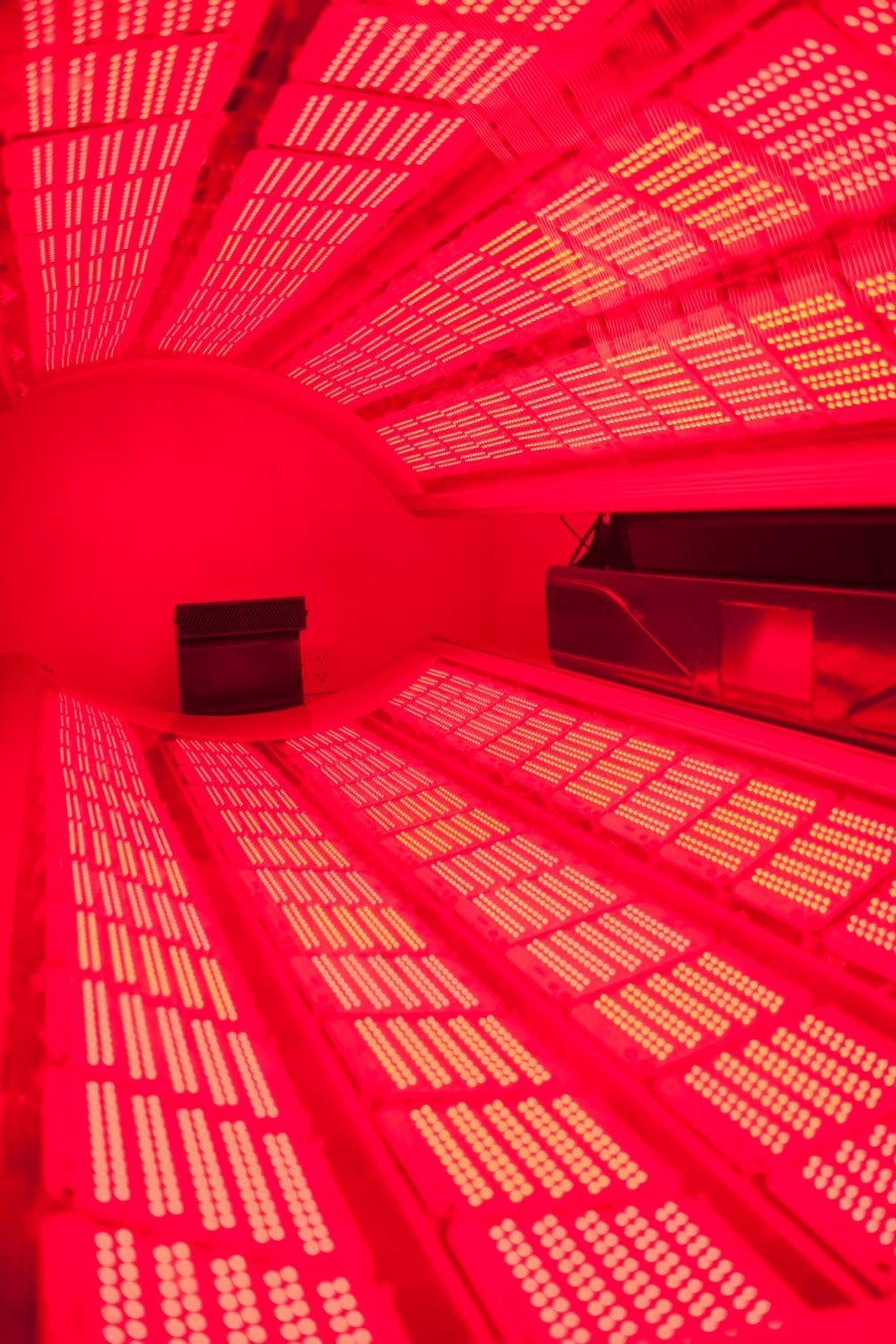Got a tattoo you regret and eyeing your Red Light Therapy at Home kit? Short answer: No, Red Light Therapy won’t fade your ink. But don’t switch off just yet—find out why Red Light Therapy Panels and Red Light Therapy Beds still shine when it comes to skin and healing.

Understanding How Red Light Therapy Works (and Doesn't)
Wavelengths and Depth of Penetration
Red light therapy involves using low-level red and near-infrared light, typically ranging from 600 to 850 nanometres. These wavelengths only reach a few millimetres below the skin’s surface, affecting the epidermis and upper dermis.
While this depth is enough to help with cellular repair, it doesn’t reach far enough to affect tattoo pigment, which is embedded deeper in the dermis.
Cellular Mechanisms (Mitochondria, ATP Production)
This therapy stimulates the mitochondria—the powerhouse of your cells—encouraging more ATP (energy) production. Increased ATP supports cell regeneration, reduced inflammation, and overall skin health.
However, none of these effects target tattoo ink particles, so fading is highly unlikely.
Why It Differs from UV Light Exposure (Sunlight)
Unlike UV light from sunlight, red light therapy doesn’t generate the type of energy that breaks down pigment. UV rays can fade tattoos over time by damaging the skin, but they also come with risks like skin ageing and cancer.
Red light is safer and beneficial for skin, but it simply doesn't have the same fading effect.
Debunking the Myth: Why RLT Doesn't Break Down Ink
Comparison to Laser Tattoo Removal Technology (Q-switched lasers, selective photothermolysis)
Laser tattoo removal uses powerful, high-frequency lasers like Q-switched types. These work via selective photothermolysis, which targets pigment directly and breaks it into pieces.
Red light therapy panels and beds don’t have the power or precision to do the same.
Research and Anecdotal Evidence
So far, there’s no reliable research confirming that red light therapy can fade tattoos. Some anecdotal reports float around online, but most people report little to no visible change.
It’s a common misconception, likely confused with other light-based treatments.
Beyond Fading: How Red Light Therapy Can Benefit Tattoos
Promoting Tattoo Healing and Recovery (For New Tattoos)
Reducing Inflammation and Swelling
Red light therapy may help reduce swelling and irritation in the skin. For fresh tattoos, this can offer some relief during the healing process.
Accelerating Skin Regeneration and Wound Closure
By improving cell energy levels, red light supports quicker tissue repair. This may lead to faster scab healing and better overall recovery after tattooing.
Minimising Discomfort and Itching
Red light’s soothing effects could help ease itching and tightness, common issues in the first few days post-ink.
Enhancing Circulation for Optimal Healing
Improved blood flow means more oxygen and nutrients delivered to the skin. This helps wounds heal more efficiently and reduces the chance of infection.
Considerations for Using Red Light Therapy on Tattooed Skin

When to Start RLT After a New Tattoo (Importance of Initial Healing Phase)
It’s best to wait until your tattoo has fully scabbed and healed—usually about 5–7 days—before applying red light. Starting too early could disrupt healing or ink retention.
Always check with your tattoo artist before using any therapy.
Recommended Dosage and Device Use
When using Red Light Therapy Panels or Red Light Therapy Beds, stick to sessions of 10–20 minutes, about three to five times per week. Follow your device’s instructions to avoid overexposure.
Safety Precautions and Potential Side Effects (Rare)
Red light therapy is generally safe, but mild redness or sensitivity can occur. Don’t overuse it, and stop immediately if your skin feels irritated.
What to Discuss with Your Tattoo Artist or Dermatologist
Before starting RLT—especially for new or coloured tattoos—speak with your tattooist or dermatologist. They can guide you on when and how to use it safely.
Takeaways
-
Red light therapy won’t fade or remove tattoos.
-
It can help with skin healing and comfort after tattooing.
-
Laser treatments remain the gold standard for actual removal.
-
Using Red Light Therapy at Home is still beneficial for skin quality and recovery.
-
Always consult a skin or tattoo professional before use.
Conclusion
So, can red light therapy help with tattoo removal? The answer’s a clear no. But that doesn’t mean it’s useless. Red light still offers skin-healing benefits, makes recovery smoother, and keeps your tattooed skin in top condition.
Just don’t expect it to erase that questionable holiday ink any time soon.






